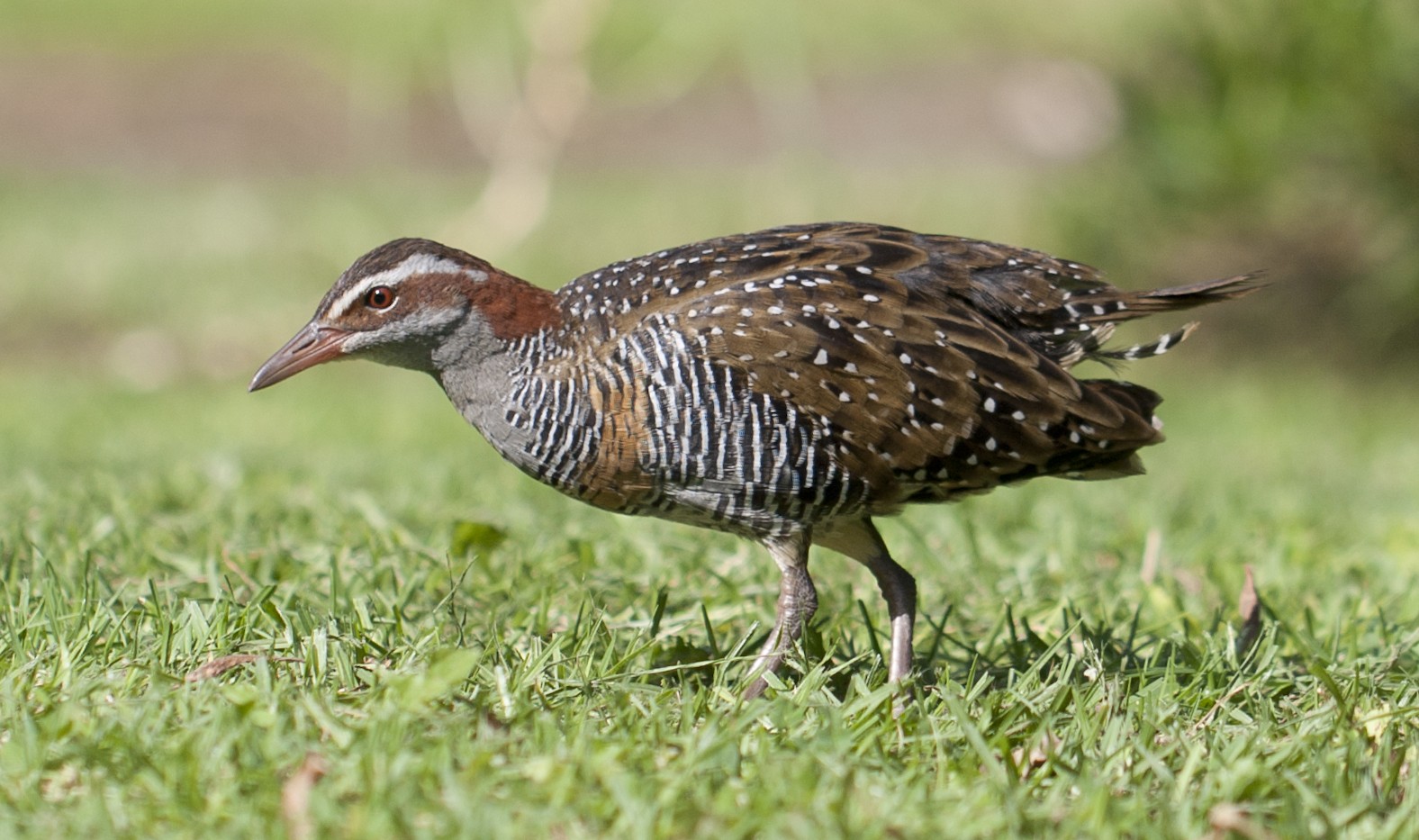Buff-banded Rail
A species of Australasian-pacific Rails Scientific name : Hypotaenidia philippensis Genus : Australasian-pacific Rails
Buff-banded Rail, A species of Australasian-pacific Rails
Botanical name: Hypotaenidia philippensis
Genus: Australasian-pacific Rails
Content
Description People often ask General Info
 Photo By Toby Hudson , used under CC-BY-SA-3.0 /Cropped and compressed from original
Photo By Toby Hudson , used under CC-BY-SA-3.0 /Cropped and compressed from original Description
It is a largely terrestrial bird the size of a small domestic chicken, with mainly brown upperparts, finely banded black and white underparts, a white eyebrow, chestnut band running from the bill round the nape, with a buff band on the breast. It utilises a range of moist or wetland habitats with low, dense vegetation for cover. It is usually quite shy but may become very tame and bold in some circumstances, such as in island resorts within the Great Barrier Reef region. The buff-banded rail is an omnivorous scavenger which feeds on a range of terrestrial invertebrates and small vertebrates, seeds, fallen fruit and other vegetable matter, as well as carrion and refuse. Its nest is usually situated in dense grassy or reedy vegetation close to water, with a clutch size of 3–4. Although some island populations may be threatened, or even exterminated, by introduced predators, the species as a whole appears to be safe and its conservation status is considered to be of Least Concern. 
Size
23 - 30 cm
Colors
Brown
Black
Yellow
Red
Gray
White
Life Expectancy
4 years
Nest Placement
Ground
Feeding Habits
Buff-banded Rail consumes a variety including crustaceans, molluscs, insects, seeds, fruit, and frogs. They forage for food both day and night, showcasing a preference for wetland environments. Uniquely, buff-banded Rail is not averse to scavenging carrion or rifling through refuse.
Habitat
Buff-banded Rail favor a range of wetland habitats, including marshes, swamps, and lakes, as well as estuaries and coastal lagoons where mangroves and saltmarshes abound. They are adaptable and may also be found in drier environments such as bushed grasslands, heathlands, and various types of forests. Often, buff-banded Rail occupy areas with dense vegetation like tall grasses, reeds, and rushes. Their habitat extends to human-altered landscapes, including agricultural lands, gardens, parks, and even golf courses. These birds inhabit elevations from sea-level to mountainous regions up to 3600 meters.
Dite type
Omnivorous